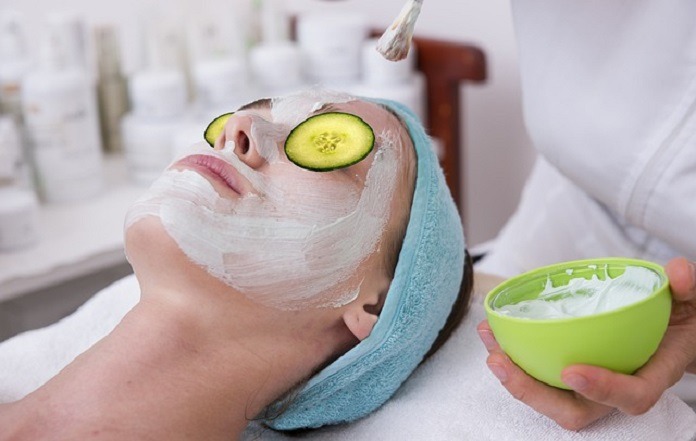Chemical peels are a widely used procedure for the management of acne scars. Also known as chemexfoliation, chemical peels for acne scars involve applying one or more chemical agents, of variable strength, to the skin’s surface.
The process creates a controlled chemical-induced injury to the skin. Wounding promotes epidermal and dermal regeneration and tissue remodelling leading to aesthetic enhancement and improvement in texture and appearance of skin.1, 2 Chemical peels may be combined with other procedures for the treatment of acne scars to achieve better clinical results.1
Types of chemical peels
Based on their depth of penetration, chemical peels are classified into:
- Superficial peels: destroys the epidermis, the outer most layer of the skin and may reach the epidermal-dermal interface. It is used for mild acne scars or melasma, patches of discolored skin.1, 2 Superficial chemical peels reduce epidermolysis (skin blistering) and increase collagen deposition.3 The result is a thicker epidermis and an even distribution of melanin.
- Medium and deep peels: destroys the epidermis and penetrates into part of the dermis.1 It denatures epidermal keratin and dermal proteins.3 Medium and deep peels are an effective treatment for deep acne scars and is usually performed in a single session.
Agents used for chemical peels
Selecting the appropriate type of chemical peel depends on skin type and type of acne scars.1 The depth of penetration needed is determined by the concentration and pH of the agent used.3
Agents can:1
- reduce sebum (oil) production
- have a comedolytic effect, helping cells slough away instead of building up in skin pores
- cause keratolysis, peeling or exfoliation of skin
- possess anti-inflammatory properties
- possess anti-bacterial properties
Sometimes, combination peels might be used to minimize the side effects and reduce the risk of complications.1
The most commonly used agents are:1, 2
1. Salicylic acid (SA): commonly used for the treatment of active acne because it reduces inflammatory lesions. Common side effects include dryness and a burning sensation. For superficial chemical peels, 30% SA is often used, repeated every three to four weeks for a total of three to five sessions. It also reduces post-inflammatory pigmentation, and it has an excellent safety profile.
2. Glycolic acid (GA): has exfoliative properties and is widely used for superficial chemical peels. GA has anti-inflammatory and anti-bacterial effects. For the treatment of superficial acne scars, 10% to 30% GA for three to five minutes at 2-week intervals is usually performed. The combination of GA with micro-needling significantly improves acne scars.4 GA peels are considered a well-tolerated procedure.
3. Pyruvic acid (PA): stimulates new collagen production. Common side effects may include intense stinging and a burning sensation. 40% to 70% PA is usually used for the treatment of moderate acne scars.
4. Lactic acid (LA): has skin lightening and moisturising effects. 92% pure LA is used for the treatment of superficial acne scars. It lightens the scars and improves the texture, pigmentation, and appearance of skin.
5. Mandelic acid (MA): is used for superficial peels because it slowly penetrates the skin. 20% to 50% MA is usually applied for skin rejuvenation and lightening.
6. Jessner solution (JS): is also used for superficial peels. It consists of salicylic acid, resorcinol, lactic acids, and ethanol. It is usually used as a preparatory peel to enhance the penetration of another agent (3).
7. Trichloroacetic acid (TCA): is considered the gold standard of chemical peels. Depending on the concentration used, it can be used for superficial, medium-depth, or deep chemical peel. TCA causes protein denaturation which results in a white frost layer covering the skin. It destroys the epidermis and the dermis.
The result is an increase in collagen and dermal volume, which improves the appearance of acne scars. Despite its efficiency in the treatment of acne scars, TCA may cause hyperpigmentation and it is not recommended for patients with a dark complexion.
8. Phenol: is very effective for the treatment of acne scars and is used for deep chemical peels. It is used with caution due to its system absorption characteristics that may cause serious side effects such as respiratory depression, cardiotoxicity, or nephrotoxicity.
General Procedure:3
Chemical peels are generally considered a safe and effective procedure for the treatment of acne scars and other skin disorders.
- A pre-procedure consultation starts by an assessment of skin color to predict any pigmentation that might result from chemical peeling.
- Photographs might be taken for before-after comparison.
- Pre-peel care, referred to as priming, includes pre-treatment activities that are performed to prepare the skin. Pre-peel care is done to detect intolerances, reduce the risk of complications, enhance the penetration of the agent, and accelerate healing.
- Pre-treatment of the skin usually begins two to four weeks before the chemical peel is performed. Patients are required to limit sun exposure and apply sunscreen.
Resources:
- Kontochristopoulos G, Platsidaki E. Chemical Peels in Active Acne and Acne Scars. Clinics in dermatology. 2016;35(2):179-182. doi:10.1016/j.clindermatol.2016.10.011
- Lee KC, Wambier CG, Soon SL, et al. Basic chemical peeling: Superficial and medium-depth peels. Journal of the American Academy of Dermatology. 2019;81(2):313-324. doi:10.1016/j.jaad.2018.10.079
- O’Connor AA, Lowe PM, Shumack S, Lim AC. Chemical peels: A review of current practice. Australasian journal of dermatology. 2018;59(3):171-181. doi:10.1111/ajd.12715
- Sharad J. Combination of microneedling and glycolic acid peels for the treatment of acne scars in dark skin. Journal of cosmetic dermatology. 2011;10(4):317-323. doi:10.1111/j.1473-2165.2011.00583.x
- Image by Tumisu from Pixabay



